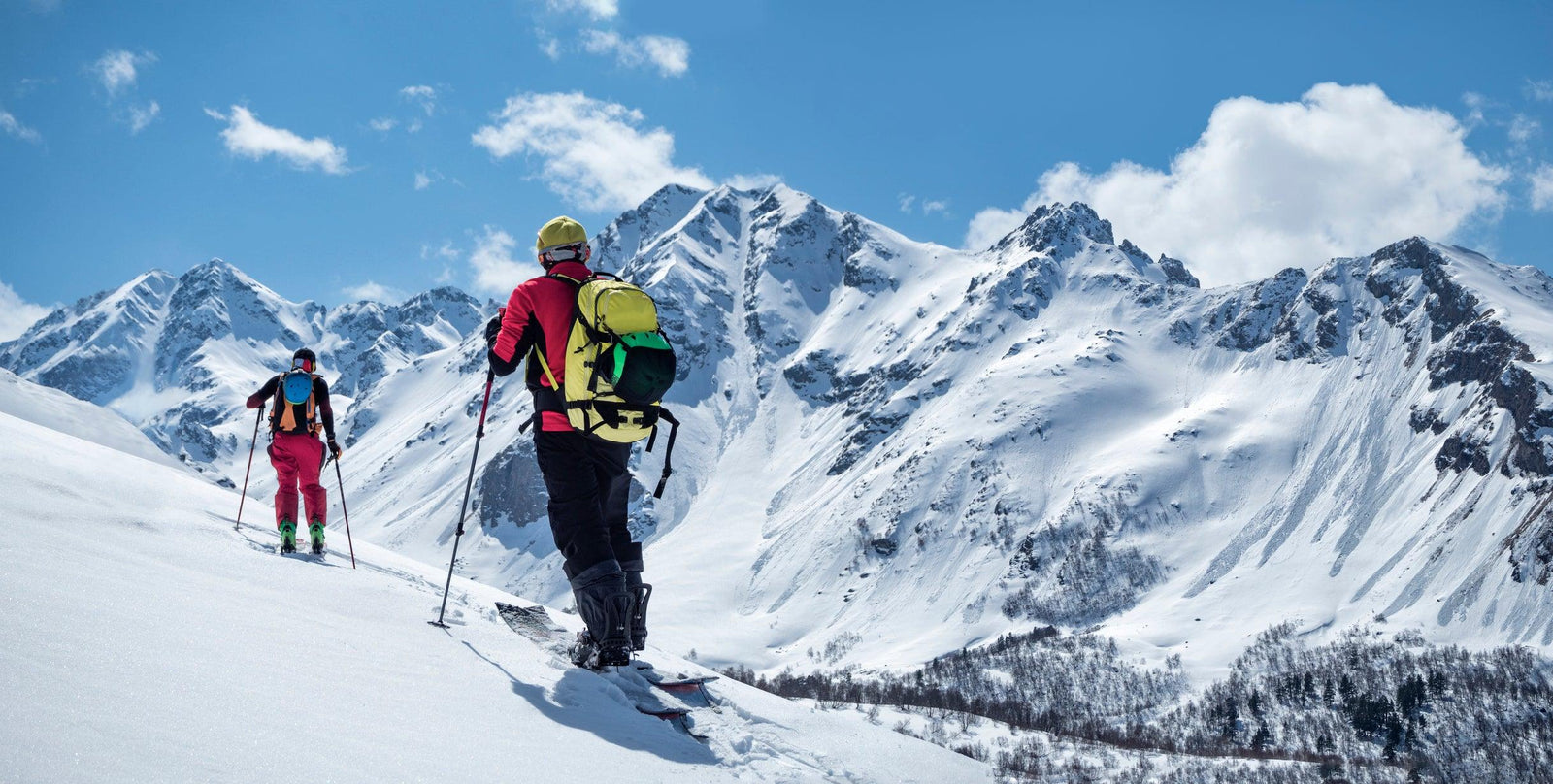Getting Ready for Backcountry Skiing Season

It’s getting warmer, the days are getting longer, the snowpack is at its peak and most importantly for backcountry skiing and snowboarding, the snow is stabilizing and getting safer.
As you consider venturing out into the backcountry this spring, whether you’re on a splitboard or a backcountry ski set-up, one thing that’s true for both is that the right gear will make or break your day. Below you’ll find some tips and tricks that can help you stay comfortable and safe on your backcountry ski tour.
1. You’re going to get warm skinning up the mountain
It’s a little counterintuitive because backcountry skiing often takes place at high elevation but you’re going to get warm as you head uphill. Skinning – placing skins on the bottom of your skis or splitboard allowing you to move uphill – up a mountain is very hard work. Slopes are often steep, the air is thin, the mechanics of movement are challenging and toss in an intense sun, you’re going to start to sweat. The best way to properly layer for this part of the activity is to make sure you have a water + windproof, lightweight, highly breathable shell that you can easily remove. In addition, make sure you’re wearing a base layer that wicks moisture. The best material for your shell is either going to be GORE-TEX®, GORE-TEX PACLITE® or FUTURELIGHT™ (FYI: FUTURELIGHT™ proprietary to The North Face ). These materials are lightweight, water + windproof and incredibly breathable. As for a base layer, the best material you can wear for both tops and bottoms is a midweight merino wool.
2. You’re going to get cold when you get to the top of your climb
The moment you get to the top, alongside the relief that your climb is over, you’ll feel a slight or perhaps even jarring chill. Remember, all of the effort applied to getting to the top resulted in body moisture and now that you’re high on the mountain and the winds are whipping, you’re going to feel that cold, brisk air. Make sure that the shell you removed on the way up is easily accessible and before you do anything else – disassemble your skins, grab some water and PUT ON THAT JACKET. Doing so will keep your critical body temperature high and allow you to cool down slowly.
3. You’re going to need a backpack that can store or hold everything you have
Yes, we do mean everything – this is not an exaggeration… You should bring a pack that not only has room for your layers as you remove them, but in addition, you need space for your shovel, probe, ice axe, foldable hiking poles, food, water and also your skis or snowboard itself. There are plenty of instances in the backcountry where you may need to take off your skis or splitboard and hike out of a sticky situation. If you’re caught in one of these situations with a pack that doesn’t have the capability to strap your equipment to, then you may quickly find yourself having to choose between using your hands to navigate out of a bad spot or holding your gear as you do so. THIS IS NOT A CHOICE YOU WANT TO MAKE. Plan ahead and be prepared with a pack that has the capacity to pack everything you have.
With the snow season coming to an end, the desire to head out of bounds in search of untracked powder lives within us all. But don’t let the unparalleled beauty and mystical awe of a backcountry adventure catch you off guard. Be educated and be prepared to handle what backcountry delivers you. In addition to a detailed packlist, also remember to check your local avalanche information center before you head out.


